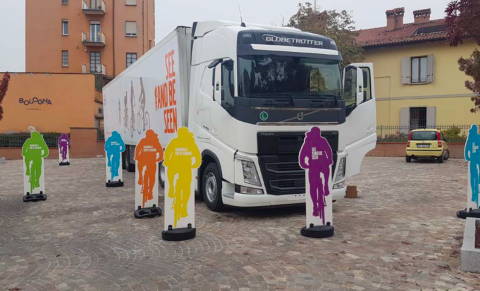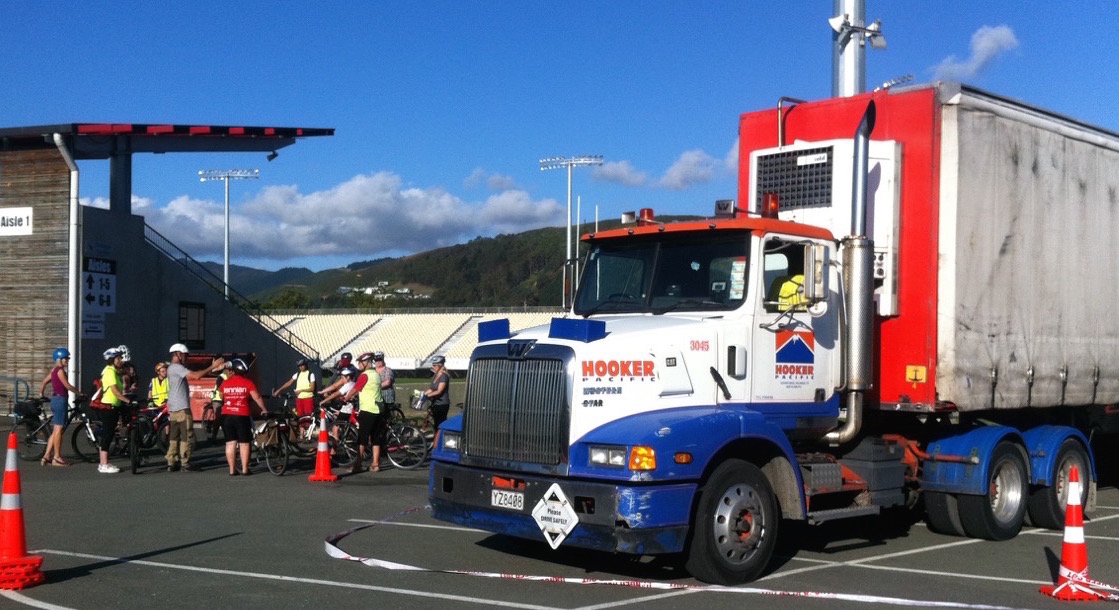
CAN's Share the Road Campaign is about raising awareness and empathy between cyclists and the drivers of large trucks and buses. Keeping up with international best practice is important, so we know we’re offering the best possible guidance to our workshop attendees. Campaign Manager Richard spend a hectic two weeks visiting cycle safety trainers in Los Angeles and Vancouver, and then attending the International Cycling Safety Conference in Bologna. Here are some of his top lessons.Presentations by Volvo truck and car people gave accounts of amazing developments in car and truck technology, where the vehicle ‘knows’ where cyclists and pedestrians are and can predict where they are headed, allowing them to ready the brakes if a crash is imminent.
Another session discussed red light running by cyclists. They found that this varied in the cities they looked at from 8% in Melbourne to 87.5% in Dublin! The interesting point they made was that of the cyclists who ran the red light, some did it safely and others didn't. The implication for the Share the Road campaign is that cyclists need to know that while some drivers may do unexpected things that are unlikely to result in a crash, others will do things that probably will result in a crash. To illustrate the lessons we might take from this, another speaker recommend cyclists continually look for escape routes while in traffic, just in case things go to custard.
A presenter suggested the six factors (below) his research showed that if adhered to by cyclists would reduce the likelihood of them being run over-
- Maintain safe speed at all times;
- Maintain vigilant awareness of potential hazards on all sides;
- Maintain safe position in traffic relative to nearby vehicles, pedestrians, etc. at all times;
- Maintain sufficient margins for error at all times;
- Yield right-of-way unless specifically offered;
- Obey all traffic laws;
- Check carefully for other traffic (vehicles, pedestrians, etc.) before changing speed or direction.

An interesting Spanish presentation looked at configurations of peletons (frequently a source of feedback in NZ, with many road users citing the MAMIL phenomenon), and came up with the following conclusions. Note the first is the least safe with the last being the safest-
- Individual (1)
- Two cyclists in parallel (2)
- Three cyclists in line (1+1+1) or with two rear cyclists in parallel (1+2)
- Two cyclists in line (1+1)
He went on to say larger groups are more dangerous due to them being harder to pass plus the increased risk of cyclists crashing into each other.
Finally, Richard reckons we're soon going to face the same issues with e-bikes as they are in Holland. From Jan 1st 2017, 'speed pedelecs' (able to travel at up to 40 km/h) will not be able to go on cycles paths, and riders of 'speed pedelecs' will be required to wear a helmet.

